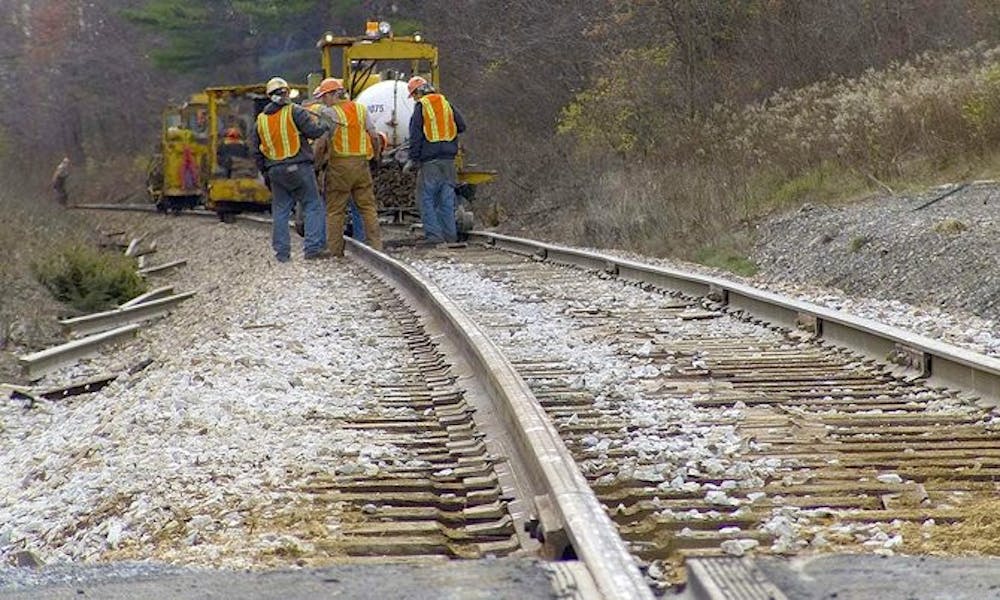The train tracks that run through town, seemingly broken down décor, are scheduled for a substantial improvement. The Vermont Agency of Transportation plans to lower the railroad beds to accommodate double-decker trains and renovate the two rail bridges in town.
The replacement of deteriorating bridges on Merchants Row and Main Street is tentatively set to begin this summer and span over the next four years.
Middlebury is scheduled to become an official Amtrak stop, with a station off McIntyre Lane. The train will enable easier transportation, linking the town to Burlington and Rutland.
Initial construction plans outlined 20 hour work days for seven days a week in order to complete the renovations as quickly as possible.
The project has been met with significant controversy since it was approved in 2012. From the high cost, now approaching $40 million, to the disruption of the town, the backlash toward the advancements have not gone unnoticed.
Locals have expressed concerns over the construction disrupting the community with its noise and expanse.
The construction will substantially interfere with traffic patterns due to long-term road closures. Local business owners in particular are concerned that the project will decrease their sales. Some have already begun to relocate elsewhere.
Other concerns include the ecologic repercussions of induced runoff into Otter Creek and the risk posed to historic buildings near the construction site.
Chris Cole, the director of policy, planning and intermodal development for VTrans, is pushing forward. He said that investing in the rail systems is what will help ensure Vermont’s economic success.
The budget includes funds to implement a temporary parking garage and to relocate a public transit bus stop in order to mitigate the impacts of construction.
Moving forward, Middlebury officials are working to reduce the scale and duration of the renovation. Community members generally endorse the renovation of the bridges, as they are over due for structural upkeep. The most forceful push is to change the minimum clearance requirement that dictates the ex- tent of the rail bed construction.
If VTrans agrees to lower the mini- mum clearance requirement from 21 to 19 feet, the cost, length and inconvenience of the project would be reduced significantly. With hopes, the rail system will find its way to blend with the town in an efficient manner, increasing overall transportation convenience with- out hindering the locals or landscape.
Middlebury Railway Renovation Sparks Debate

Comments



